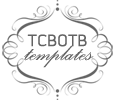Guided Math Part Three: Centers
In this post about Guided Math, I will be talking about the different centers that I use during Math Workshop in my classroom. The centers I use in my classroom include the following:
1) Buddy Games
2) Computer/iPad
3) Fact Practice
4) Math Books
5) Task Cards
6) Weekly Calendar
Buddy Games:
In this center, the students will partner up with someone from their group and play the math game that is in the center. These games will always be review of the concepts we learned the week before or during the current week. The games get changed out each week or every other week.
Computer/iPad:
In this center, the students will either get on the computer or the iPads (we will have 3 this year thanks to Donors Choose) and work on their math facts. On the computer, they will work on their xtramath.org account (if they did not get to do it during morning work), and on the iPads, they will play math games related to their math facts.
Fact Practice:
In the Fact Practice Center, students will work on two activities. First, it is important that students take a timed multiplication facts test. They will get a timer from their basket, set it, and take the fact test that is in their Math Notebook. Once they complete this activity, the students will get the multiplication or division flashcards and practice with those. As they work through the multiplication flashcards, they will record the problems and answers on a piece of paper to document the center.
Math Books:
Thanks to Donors Choose, I was able to get funding for a library of books that relate to math topics. Each week, I will put in a set of books that have to do with the concepts we are learning that week. In this center, students will choose a book, read the book, and record the book title, the math concept they found in the book, and an example from the book in their math notebooks. This is a great way to integrate literacy into math.
Task Cards:
In this center, the students will have task cards in their center bin. The students will complete the task cards in the bin and record their answers on the answer sheet. These task cards ask students to complete problems related to the concepts they have been learning over the course of the week.
Weekly Calendar:
With this center, students will complete a spiral review. In their Math Notebooks, they have a section for their weekly calendar sheets. These sheets are sectioned off into different letters A - M. On the whiteboard in my classroom, I used Washi Tape to section off the board into the same letters from their Calendar Sheet. Each week, I will write up different problems into the different letter blocks and leave it up for the entire week. Students, when they are in the Calendar center, they will complete the problems on the board. Below I have listed the different letters and what type each problem is.
A) A problem from the past
B) A problem from present concepts
C) A problem from future concepts
D-E) Rounding Problems
F) A Place Value Problem
G) A Measurement Problem
H) Standard form, expanded form, word form
I) Multiplication Problem
J) Division Problem
K) Ordering Numbers from Least to Greatest
L) Fraction Problem
M) Vocabulary -> write the definition and an example
Overall, these are the centers that I will be using in my classroom.
Stay tuned for Guided Math Part Four: The Math Notebook for Student Organization












